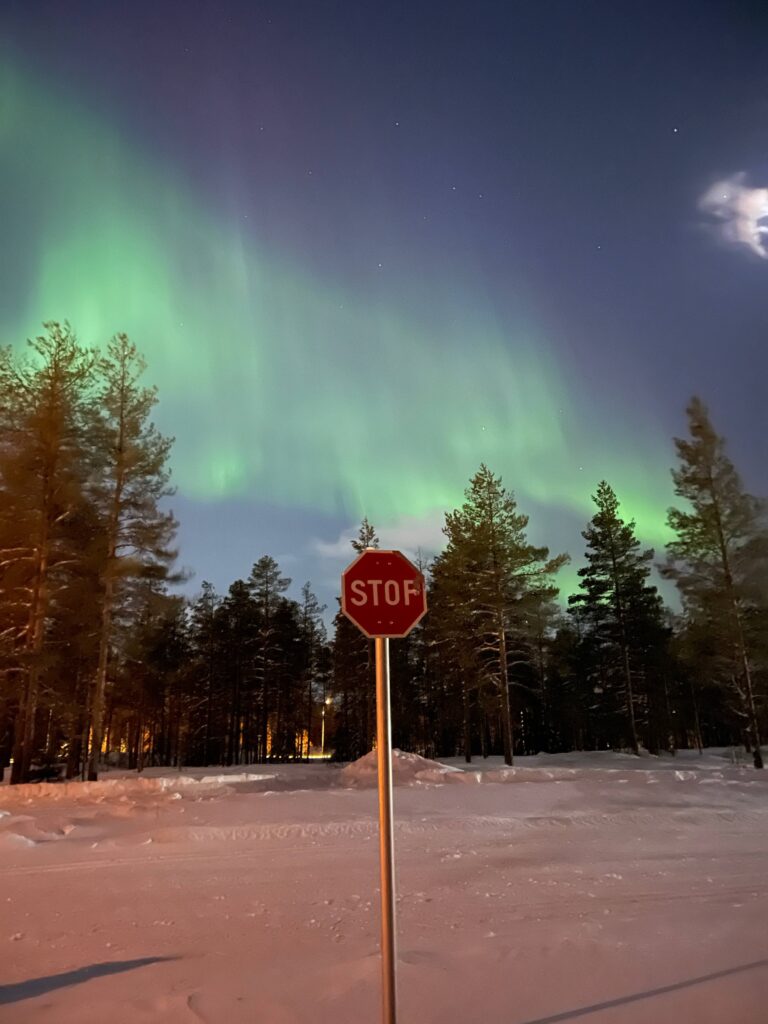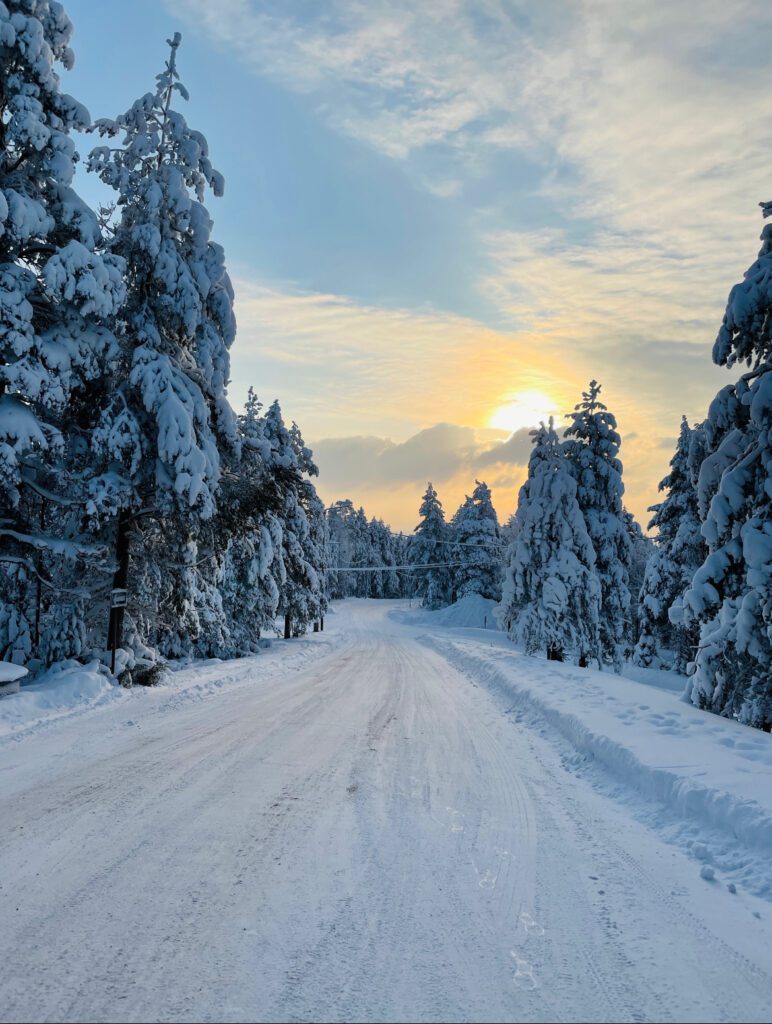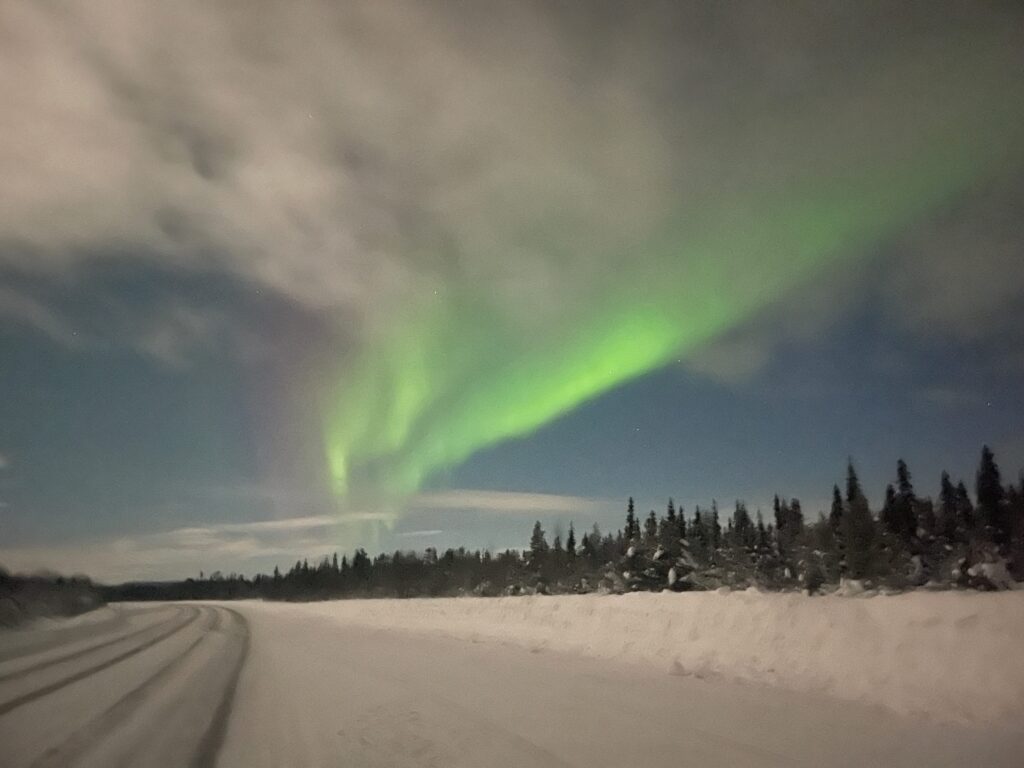This is the time of year when we locals in Lapland start to feel a bit more cautious on the roads. And it’s not just the icy roads or wildlife that make us concerned—it’s travelers who may not be used to driving here.
If you’re planning to rent a car in Lapland, please read these driving tips before you hit the road.
1. Equip Your Car with Proper Winter Tires
- Winter tires are mandatory in Lapland during winter, providing much-needed traction on icy and snowy roads. If you rent a car from here, they all have winter tires.
- Check the tread depth and pressure before hitting the road.
2. Watch Out for Wild Animals
- Reindeer, moose, and other wildlife often wander onto roads, especially at dusk and dawn.
- Be cautious and reduce speed in wildlife-prone areas, often marked with warning signs.

3. Always Use Your Lights
- Headlights should always be on, even during the day.
- Use high beams on dark stretches but lower them when vehicles approach or when following closely to avoid blinding others.
Proper Use of High Beams:
- Use high beams when driving on dark roads, but dim them when oncoming traffic approaches or when following other cars.
- Remember: don’t drive without high beams in dark areas unless another vehicle is nearby.

4. Avoid Stopping in the Middle of the Road
- If you need to stop, find a safe pull-over area rather than stopping abruptly on the road.
- Stopping in the middle can be dangerous on icy roads where stopping distance increases.
Avoid Stopping on the Road to Photograph Reindeer or other wildlife
- Reindeer sightings are a magical part of the Lapland experience, but stopping in the middle of the road to take photos can be extremely dangerous.
- If you want to take a picture, wait until there’s a safe place to pull over fully out of the way of traffic.
- Remember, icy roads make it harder for other drivers to stop quickly, and unexpected stops on the road can lead to accidents.
- Prioritize safety—there will be other chances to capture Lapland’s wildlife without putting yourself or others at risk.

5. Stick to Main Roads
- Smaller roads may not be regularly plowed or maintained, increasing the risk of accidents.
- Main roads (one or two numbered) are generally safer and better maintained.
6. Don’t Rely Solely on Google Maps
- Some routes may not be well-maintained in winter. Locals or official route recommendations are often more reliable.
7. Slow Down on Icy Roads
- Roads can be deceptive, especially in winter when black ice isn’t always visible.
- Adjust your speed to road conditions, aiming to drive slower than usual in potentially icy areas.
8. Keep a Longer Safety Distance
- Allow much more space between you and the car ahead, giving yourself extra time to stop safely.
- This is essential in icy or snowy conditions where stopping distance is much longer.
9. Approach Red Lights and intersections with caution
- Braking too late on icy roads can be risky, especially at intersections.
- Slow down well in advance when approaching red lights or intersections.

10. Northern Lights Hunters: Stay Safe and Avoid Unplowed Roads
- Many visitors venture out to see the northern lights, but some get lost or stranded on small, unplowed roads that aren’t suitable for winter driving.
- Stick to main roads or well-maintained routes, as smaller roads can be icy and may not be plowed regularly.
- Additionally, avoid stopping in the middle of the road to watch the lights. Always find a safe pull-over spot, as sudden stops can be dangerous on icy roads.
- Remember, the northern lights are a beautiful sight, but safety should always come first.
- More tips for Northern lights hunters here.
11. Be Prepared for Long Distances
- Make sure your car has enough fuel before setting out, as gas stations can be few and far between in Lapland, especially on rural routes.
- It’s also wise to carry drinking water and warm clothing in case of an emergency. If your car breaks down or gets stuck, you may need to wait in cold conditions for a tow truck or other assistance.
- Make sure that your phone has battery.
- Plan ahead to stay safe and comfortable, even if delays occur.
That’s it for the driving tips this time. Hopefully this helps you, and hopefully we can all drive here safely!
And if you do not want to drive yourself, you can always check for private transfers on GetYourGuide*, get a taxi, uber or use local public transporations!





